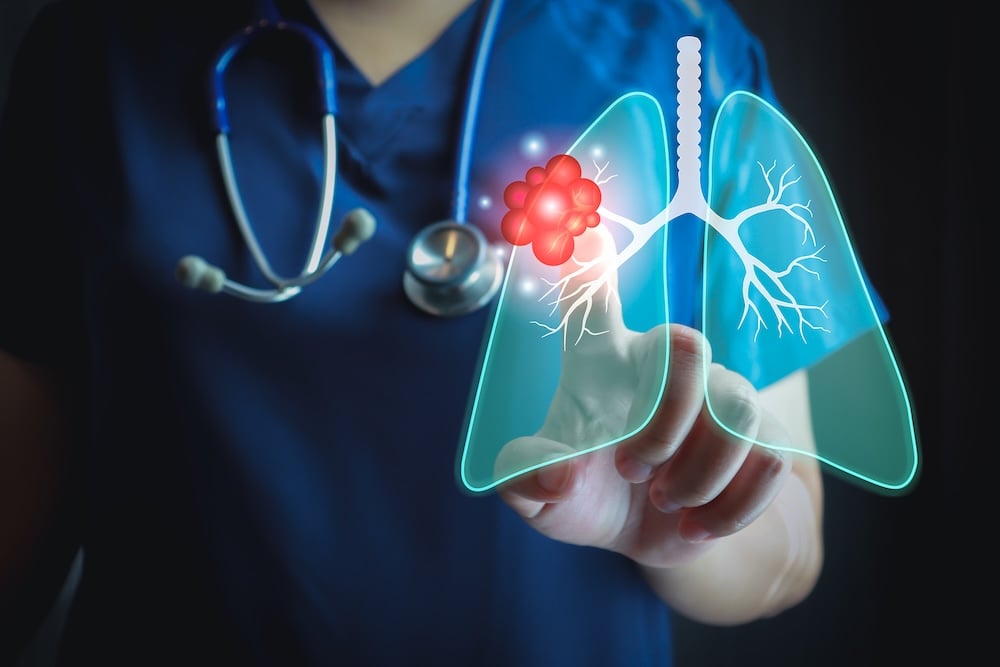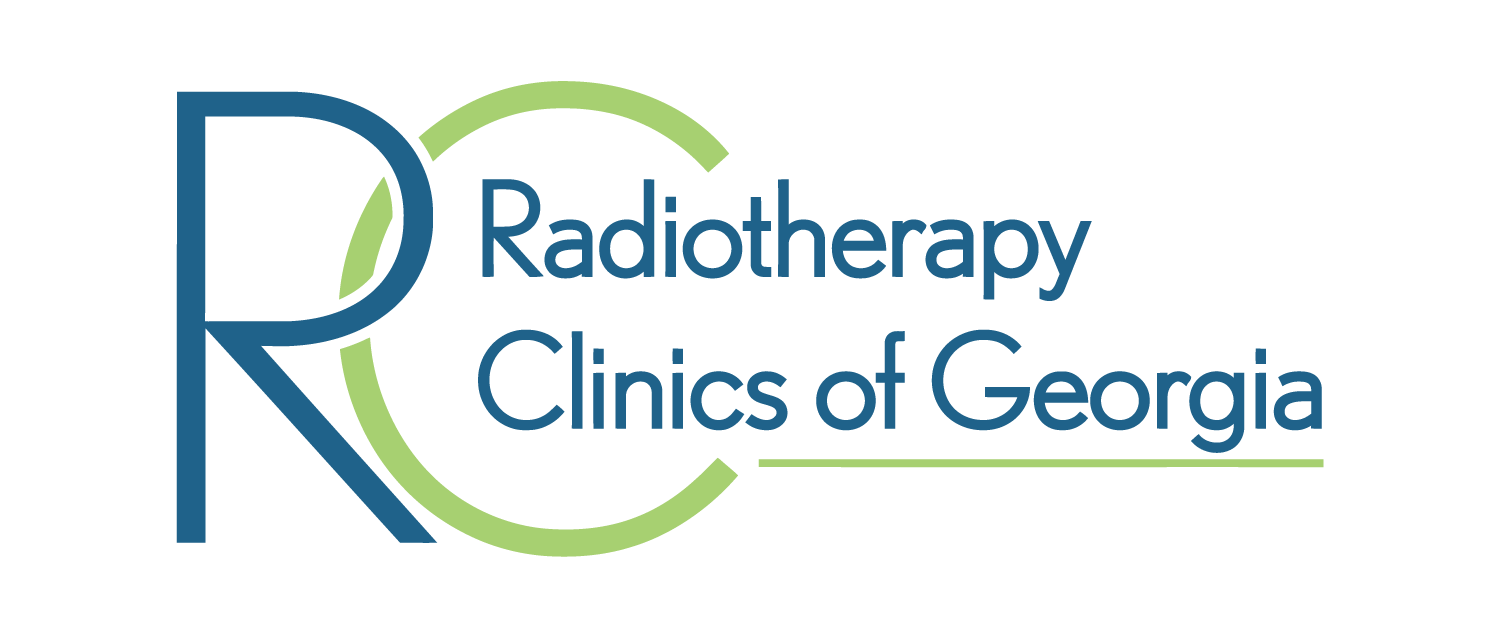
For many years, the most effective treatment plans for lung cancer were determined by the subtype, size, location, and stage of the tumor. These are all still part of the treatment planning process. However, recent advancements in cancer research make it possible for oncologists to customize non-small cell lung cancer treatments more precisely by considering each patient's unique characteristics, including their genetic makeup.
What Is a Genetic Mutation?
A gene is a segment of DNA that controls how our bodies look, grow, and function. When a gene mutates or changes, it can affect various processes within the body, including cell division. The DNA damage caused by a mutation can be difficult or impossible to repair, resulting in uncontrolled cell growth or cells living longer than normal. For some individuals, this can lead to the development of cancers, such as non-small cell lung cancer.
There are two main categories of genetic mutations: somatic and germline mutations:
- Somatic mutations are acquired, meaning they develop during a person's lifetime. These mutations are caused by various external factors, such as tobacco smoke, air pollution, chemicals, radon gas, ultraviolet radiation from the sun, viruses, and even unknown causes.
- Germline mutations are inherited or passed down from a parent.
The genetic mutations associated with developing non-small cell lung cancer are primarily somatic (not inherited).
How Biomarker Testing Identifies Genetic Mutations
Lung cancer specialists use biomarker testing to identify any genetic mutations. Understanding the specific gene mutations in a patient with non-small cell lung cancer significantly impacts the recommended treatment plan.
Biomarkers, also known as biological markers, are substances such as genes, proteins, hormones, or other compounds found in cancer cells, surrounding tissues, and bodily fluids such as blood. These molecular markers provide valuable information about the characteristics of the cancer.
If you are diagnosed with non-small cell lung cancer, your oncologist may recommend genetic mutation testing.
Lung Biopsy to Collect Tissue Sample for Biomarker Testing
A biopsy is the gold standard for confirming whether a patient has lung cancer. The tumor cells removed during the biopsy can also be used for biomarker testing. If tissue samples cannot be taken during surgery to remove the tumor, they may be collected in other ways, such as through bronchoscopy. A bronchoscopy involves using a flexible tube inserted through your nose or mouth and into your lungs to extract tissue.
Once a sample is collected, one or more tests will be performed to identify the presence of any gene mutations.
Gene Mutations Associated with Non-Small Cell Lung Cancer
Many genes are linked to mutations found in non-small cell lung cancer (NSCLC). The following genetic mutations may be identified through biomarker testing:
- EGFR: The epidermal growth factor receptor (EGFR) controls how cells grow and divide. Patients with lung cancer related to an EGFR mutation are usually diagnosed with EGFR-positive cancer.
- TP53: This gene helps prevent cancer by stopping damaged cells from replicating. It produces a protein called P53, which targets abnormal cells and prevents them from dividing.
- KRAS: The KRAS gene makes the K-RAS protein, which sends signals to cells about when to replicate and divide. It is often found in smokers, and the mutation may occur in combination with other genetic mutations.
- BRAF: This protein helps control cell growth, usually working with the MEK protein.
- ALK: The anaplastic lymphoma kinase (ALK) gene is active during fetal development and usually turns off before birth. Occasionally, it can reactivate or fuse with other genes, leading to cancer.
- MET: This mutation is often found in genetic tests for non-small cell lung cancer. MET can lead to cancer through processes such as MET gene amplification and Exon 14 skipping.
- FGFR1: This mutation affects how cells grow and spread. It is more common in patients with squamous carcinoma type of NSCLC, especially those who smoke.
Tests Used to Identify Genetic Mutations in Lung Cancer Cells
Several testing methods can be used to identify genetic mutations in lung cancer cells. Common tests include:
- Next-Generation Sequencing (NGS): Also referred to as comprehensive biomarker testing, this test uses computers to search for multiple biomarkers simultaneously.
- Fluorescence In-Situ Testing (FISH): A method that identifies gene mutations such as ALK, ROS1, RET, and others.
- Immunohistochemistry (IHC): Another technique for detecting mutations in ALK and ROS1. It is faster and less expensive than FISH.
- Allele-Specific Testing: A quicker, more cost-effective, and accurate method that identifies mutations in several genes, including EGFR, MET, BRAF, HER2, and KRAS.
- Liquid Biopsy: This test uses blood samples to measure tumor DNA and quickly identifies EGFR mutations.
How Biomarker Test Results Impact Non-Small Cell Lung Cancer Treatment
Biomarkers play an important role in diagnosing and treating non-small cell lung cancer by indicating whether specific proteins and mutations are present in the tumor. Understanding that biomarker test results vary among patients enables oncologists to develop highly personalized treatment plans.
The results of these tests allow oncologists to identify the specific genetic changes driving the cancer's growth, if present. This information helps direct your oncologist in selecting the most appropriate treatment, as targeted therapies are now available to address many of these mutations.
Targeted therapies work by attaching to specific targets on cancer cells, causing them to self-destruct or stop growing. Some drugs enter the cells and prevent them from dividing and spreading.
What If No Genetic Mutations Are Present?
Even if no genetic mutations are identified during biomarker testing, many treatment options are available for non-small cell lung cancer. However, targeted therapy will not be included in the treatment plan. Other treatments for NSCLC include:
- Surgery
- Radiation therapy
- Chemotherapy
- Immunotherapy
Your oncologist will coordinate with other physicians on your care team to determine the best combination of lung cancer treatments and the timing for each.
Patients with NSCLC receiving radiation therapy will most likely undergo external beam radiation therapy (EBRT). This method delivers high-intensity radiation beams to the tumor from a machine outside the body. While EBRT is not suitable for everyone, it may be necessary in specific situations, such as:
- Shrinking a tumor before surgery so it is easier to remove
- Killing any lingering cancer cells after surgery
- Treating a tumor that cannot be surgically removed because of its size or location
- When a patient cannot undergo surgery due to health reasons
Read more about all non-small cell lung cancer treatments.
What to Do After a Non-Small Cell Lung Cancer Diagnosis?
If you were recently diagnosed with non-small cell lung cancer, your oncologist will likely discuss biomarker tests to determine the most effective treatments for you. The recommended plan will depend on whether specific proteins or mutations are detected, the cancer stage, and whether this is your first treatment or if the cancer has recurred.
Radiation therapy for non-small cell lung cancer is available locally in the Atlanta area. Request an appointment with the expert team at RCOG, conveniently located in cities throughout the Atlanta area, including Conyers, Covington, Decatur, and Snellville.


